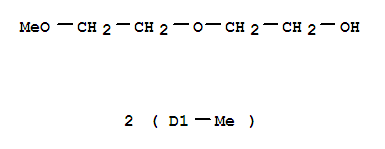Your Location:Home > Products > organic chemicals > Dipropylene glycol monomethyl ether (DPM)



CasNo: 34590-94-8
MF: C7H16O3
Appearance: colorless liquid with mild pleasant odor
|
Characteristics |
Dipropylene glycol methyl ether is a colorless transparent liquid with a faint ether smell. Dipropylene glycol methyl ether has low toxicity. Dipropylene glycol methyl ether has low viscosity and low surface tension. Dipropylene glycol methyl ether has a moderate evaporation rate. Dipropylene glycol methyl ether has good solubility and coupling ability. Dipropylene glycol methyl ether is miscible with water and has appropriate HLB value. It can dissolve grease, natural resin and rubber, cellulose, polyvinyl acetate, polyvinyl methyl/ethyl/butyraldehyde, alkyd resin, phenolic resin, Polymer chemicals such as urea resin. |
|
General Description |
Colorless liquid with a weak odor . |
|
Air & Water Reactions |
Oxidizes readily in air to form unstable peroxides that may explode spontaneously [Bretherick, 1979 p.151-154, 164]. Miscible with water. |
|
Reactivity Profile |
Dipropylene glycol monomethyl ether may react violently with strong oxidizing agents. May generate flammable and/or toxic gases with alkali metals, nitrides, and other strong reducing agents. May initiate the polymerization of isocyanates and epoxides. |
|
Health Hazard |
CALL FOR MEDICAL AID. LIQUID: Irritating to skin and eyes. Harmful if swallowed. Remove contaminated clothing and shoes. Flush affected areas with plenty of water. IF IN EYES, hold eyelids open and flush with plenty of water. May be harmful by inhalation, ingestion, or skin absorption. May cause irritation. |
|
Fire Hazard |
Combustible. Emits toxic fumes under fire conditions. |
|
Flammability and Explosibility |
Nonflammable |
|
Safety Profile |
fddly toxic by ingestion and skin contact. An experimental skin and human eye irritant. A dd allergen. Combustible when exposed to heat or flame; can react with oxidizing materials. To fight fire, use dry chemical, CO2, mist, foam. When heated to decomposition it emits acrid smoke and irritating fumes. See also GLYCOL ETHERS. |
InChI:InChI=1/C7H16O3/c1-3-7(8)10-6-4-5-9-2/h7-8H,3-6H2,1-2H3